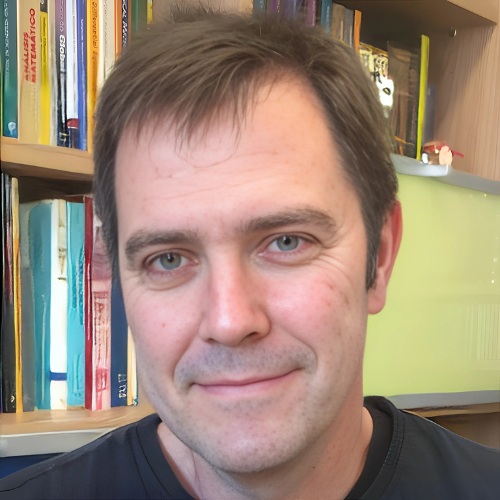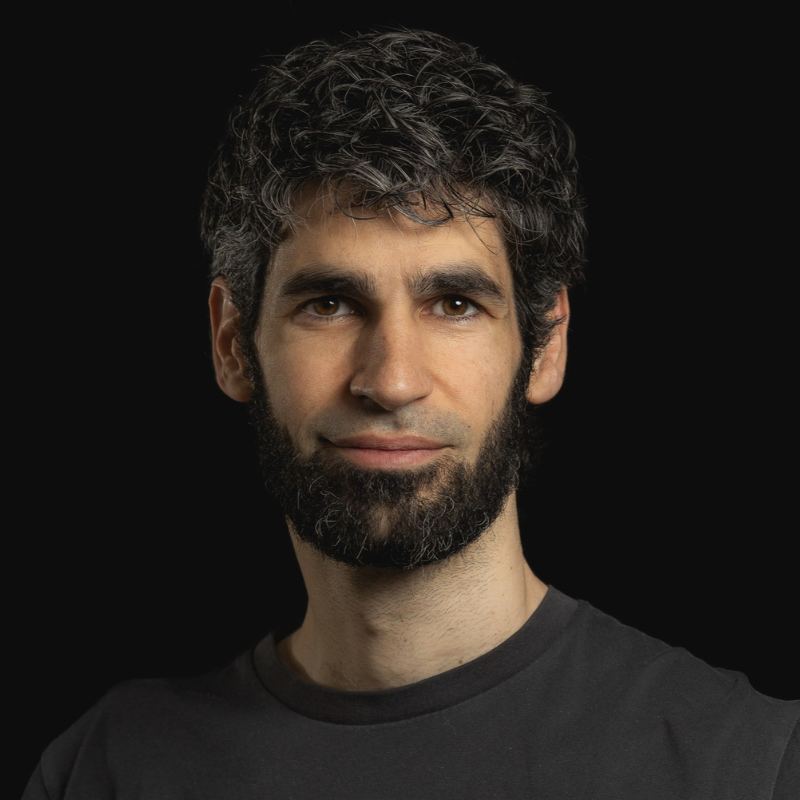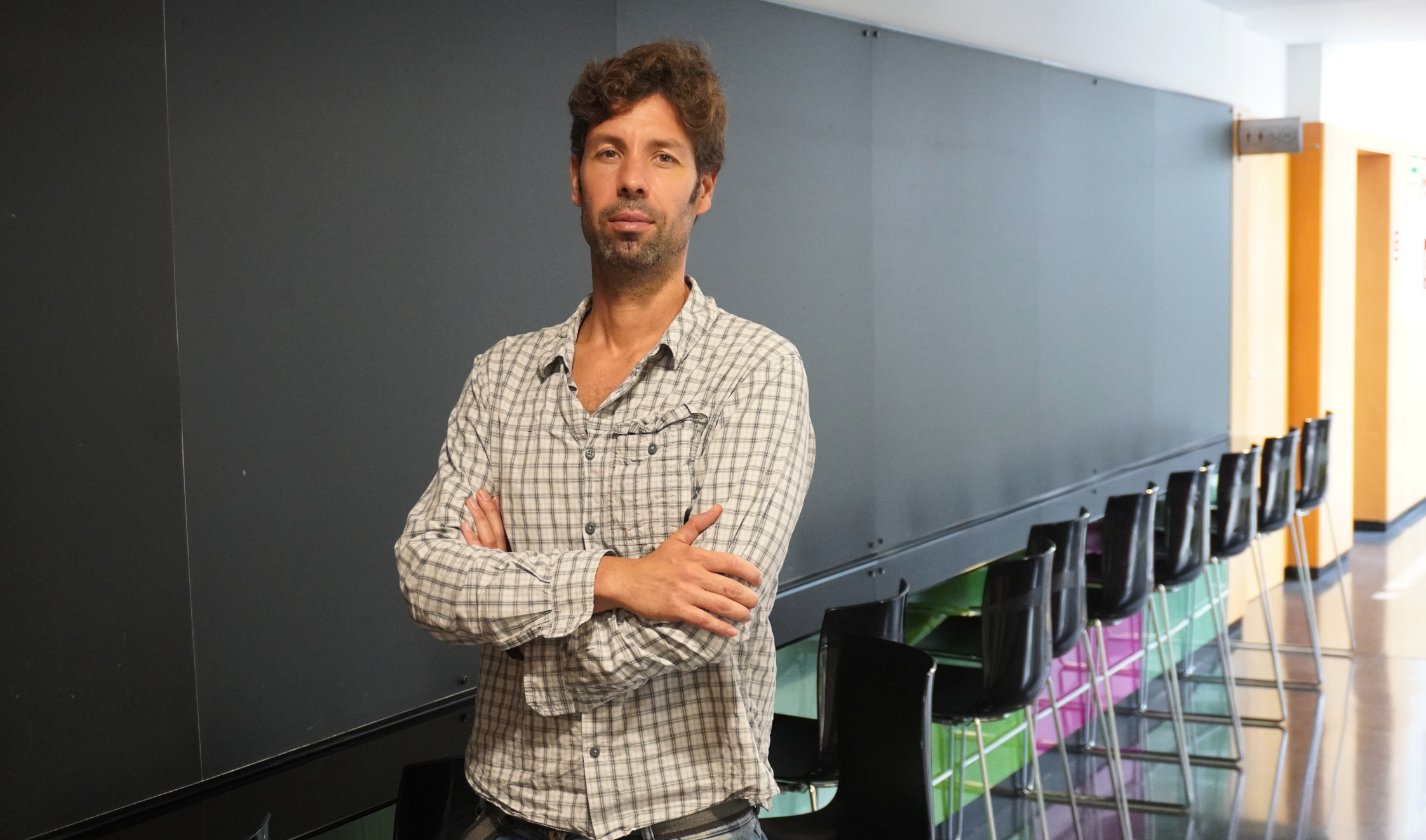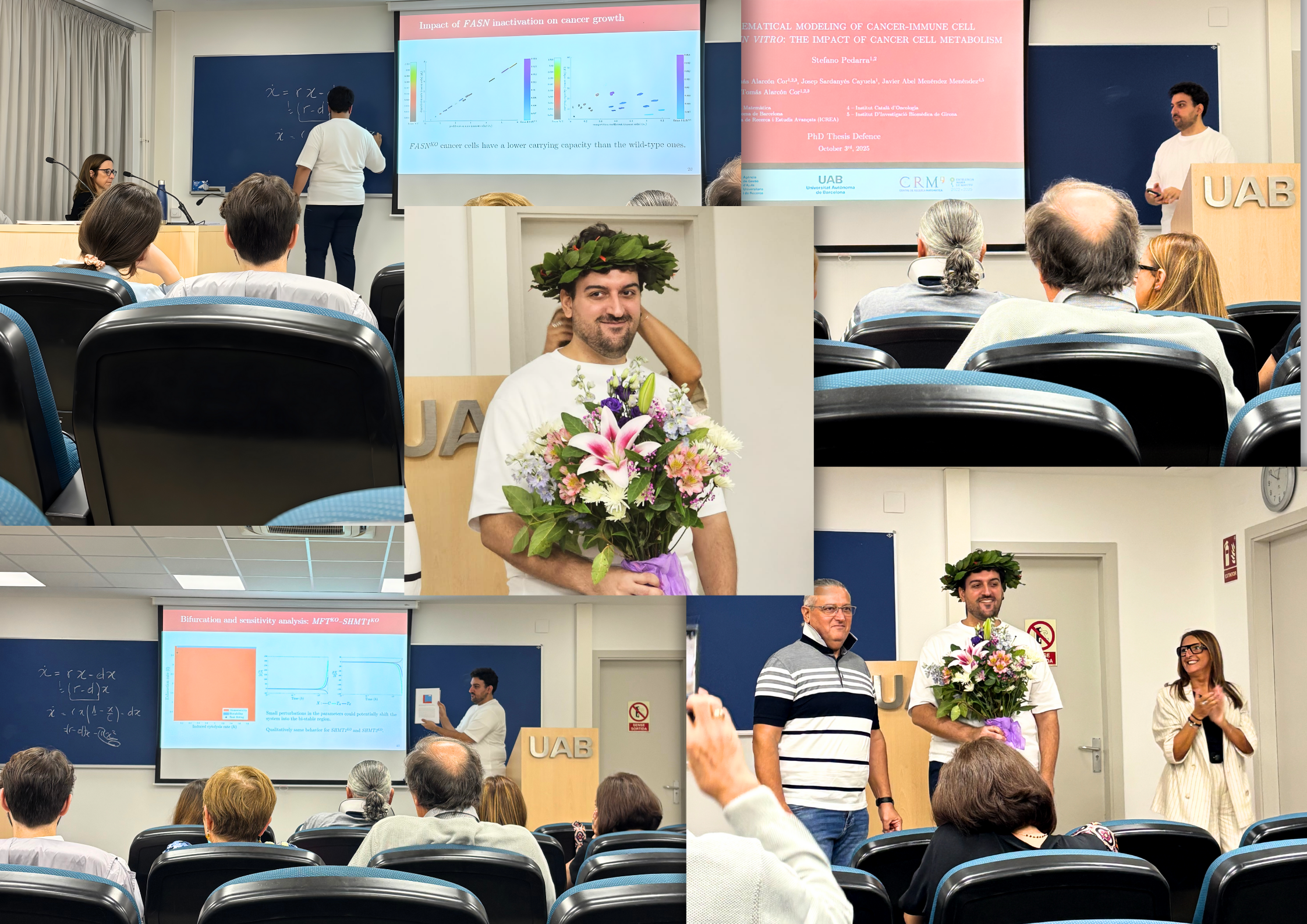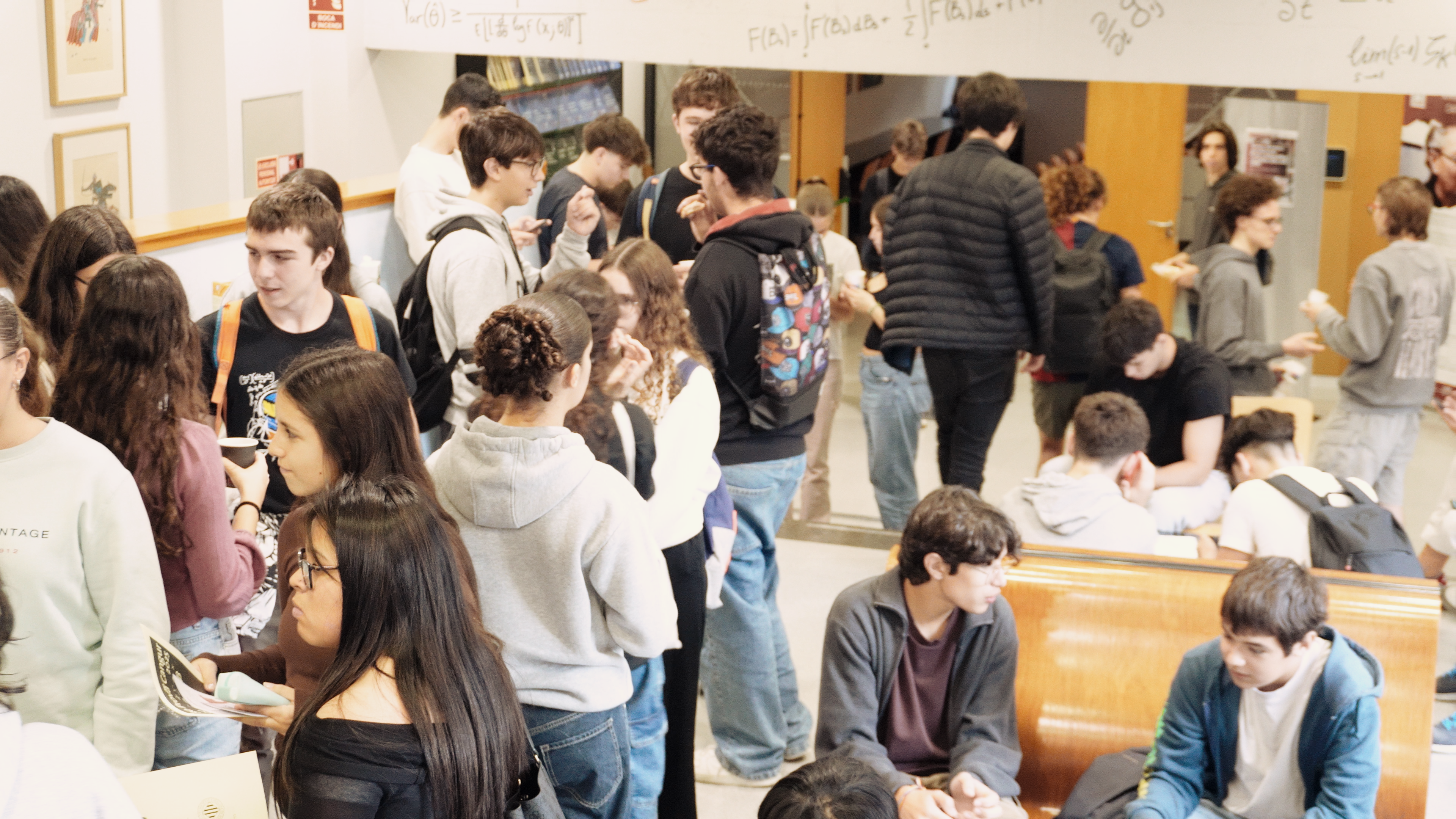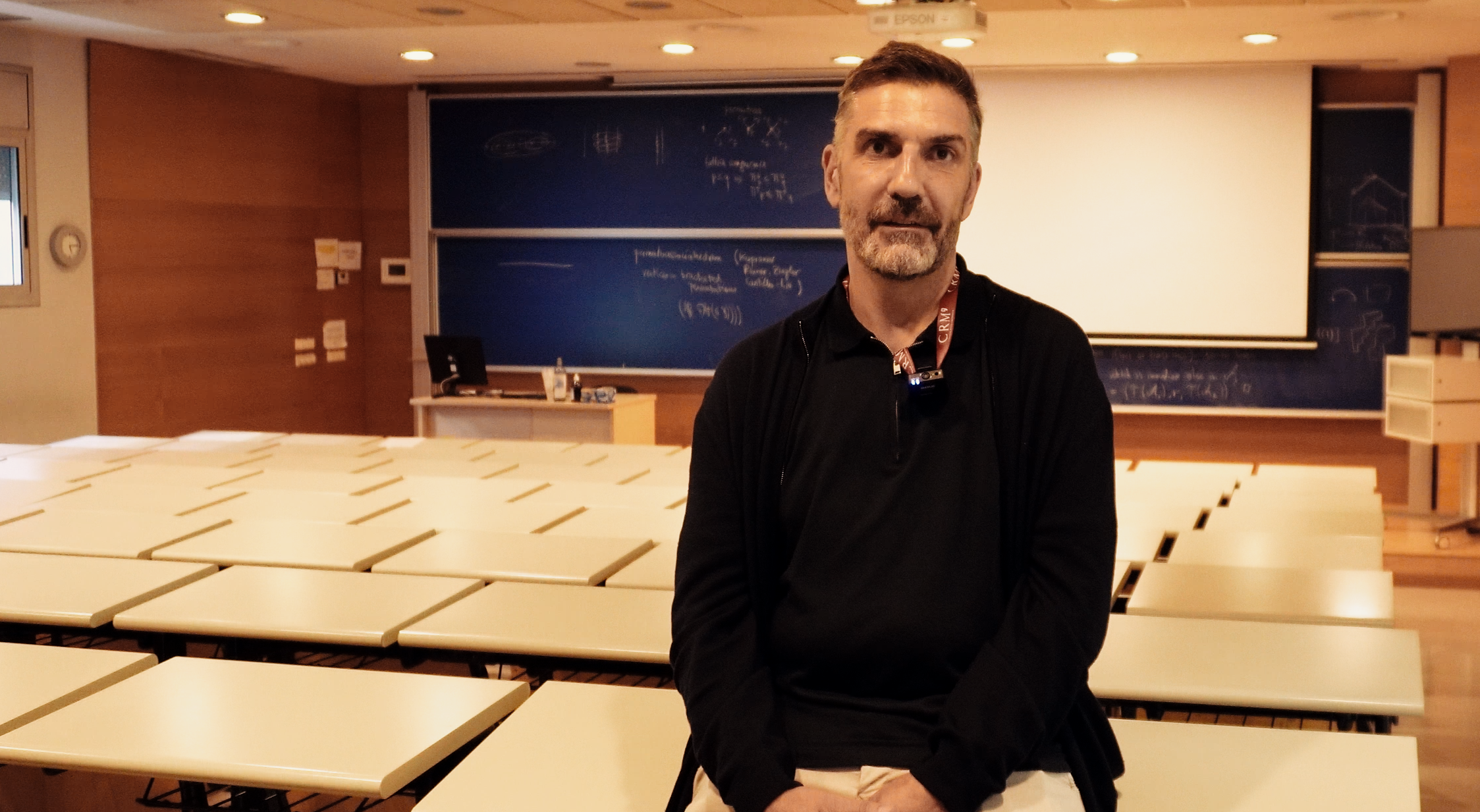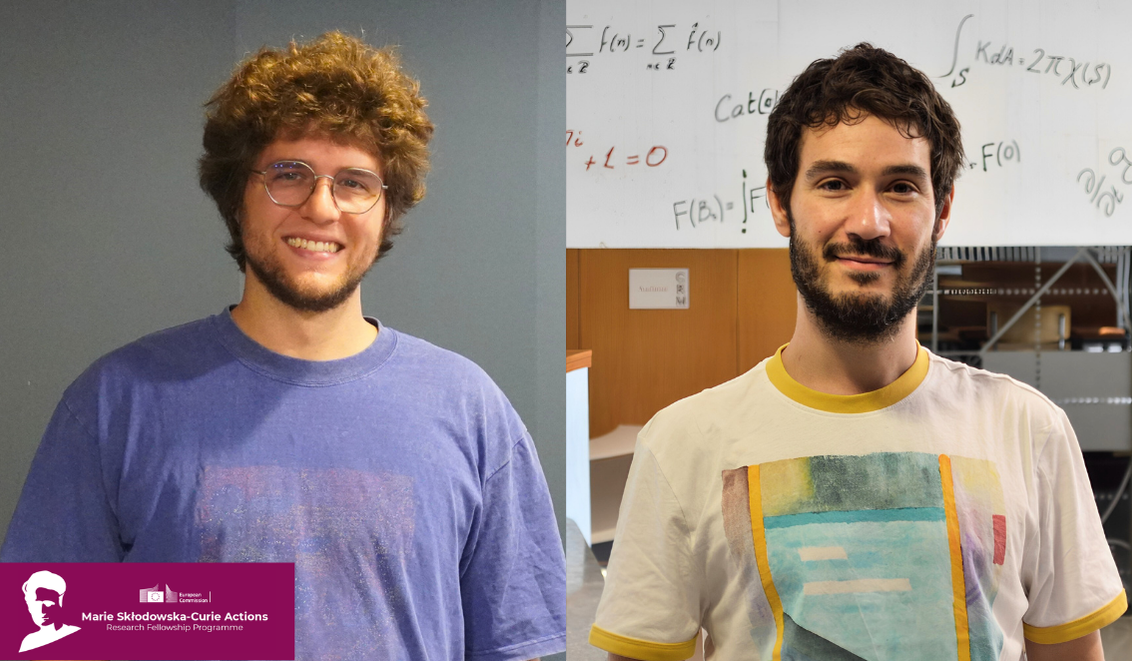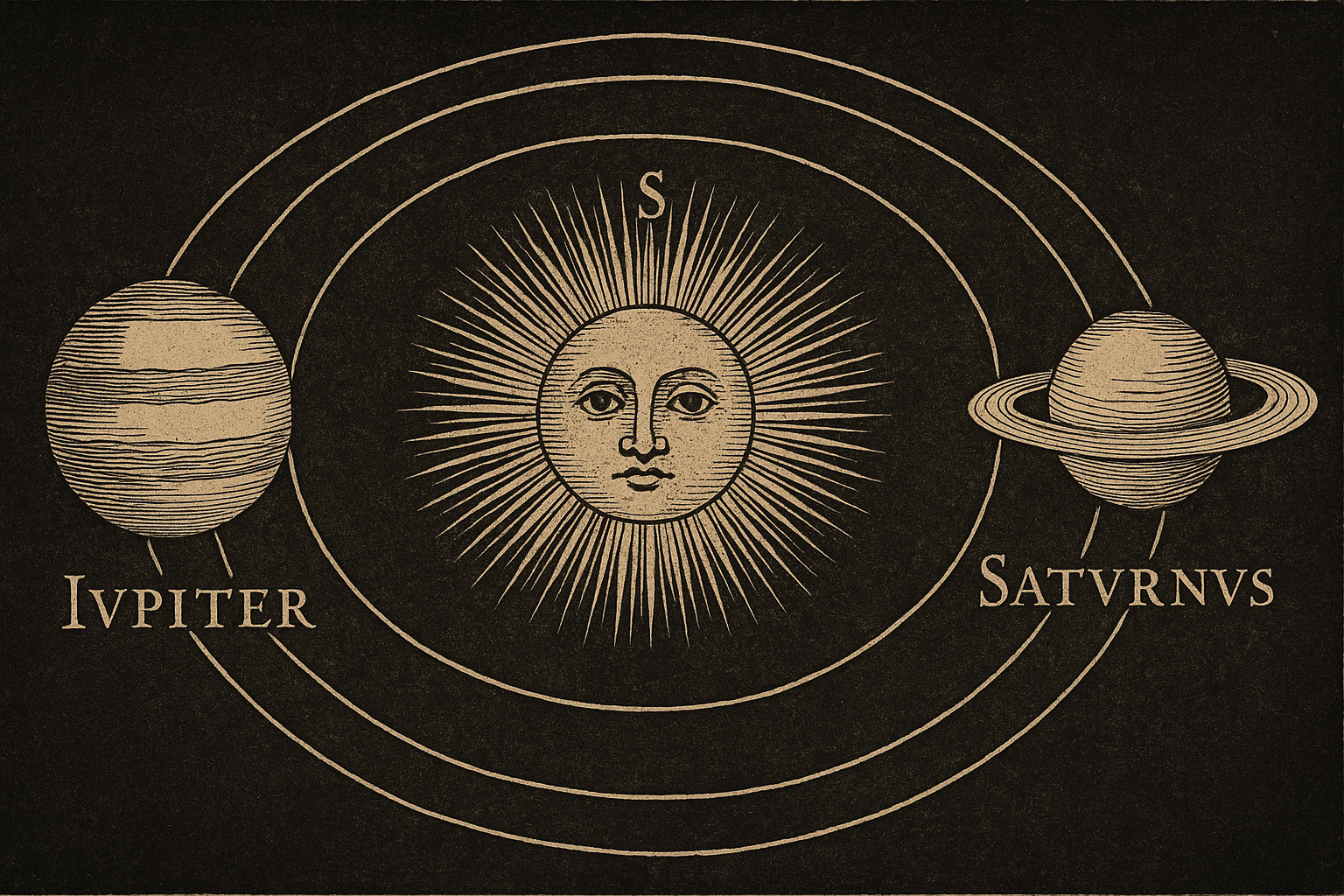
When we picture the Solar System, most of us still see that neat little diagram from our school days with the planets lined up like obedient dancers, each tracing a perfect circle around the Sun. But the reality is far messier. Over long timescales, planetary motion is chaotic and notoriously difficult to predict. Understanding the gravitational dance between just three celestial bodies (say, the Sun, Jupiter, and Saturn) has been one of mathematics’ most enduring challenges since the time of Isaac Newton.
Now, a recent study by Jordi-Lluís Figueras (Uppsala University) and Alex Haro (Universitat de Barcelona and the Centre de Recerca Matemàtica) sheds new light on this centuries-old puzzle. Using a sophisticated mathematical framework known as KAM theory (after Kolmogorov, Arnold, and Moser), they’ve shown that stable, quasiperiodic motion might be possible in a simplified version of the Sun–Jupiter–Saturn system. Their computations, carried out with ultra-high precision, have produced convincing numerical evidence that supports the applicability of a KAM theorem to this celestial configuration.
“What our work shows,” explains Alex Haro, “is that the most astronomically significant part of the Solar System could, in fact, be stable. That’s precisely the problem Newton raised in his Principia when asking about the mutual gravitational effects between Jupiter and Saturn.”
Three Bodies, Chaos, and a Historic Puzzle
In the 17th century, Newton solved the two-body problem: a planet orbits the Sun in an ellipse. But if we introduce a third body (another planet, for instance), the problem becomes wildly more complex. This infamous three-body problem is chaotic, meaning small variations in initial conditions can lead to drastically different long-term behaviour, and no general solution exists.
In the 20th century, KAM theory offered hope. It showed that under specific conditions, stable, quasiperiodic orbits could persist even in systems susceptible to chaos; trajectories that never exactly repeat but remain bounded and regular. However, those conditions were thought to be nearly impossible to meet in real astronomical systems.
Figueras and Haro’s work challenges that view. Their study, published in the Journal of Nonlinear Science, takes real values for the masses and orbital parameters of Jupiter and Saturn and shows that even outside the narrow scope of classical perturbative methods, stable motion can still emerge. They achieved this using a refined numerical approach rooted in the parameterisation method, which allowed them to compute and validate the existence of what are known as invariant tori (geometrical objects that represent quasiperiodic orbits in phase space).
“In particular,” says Haro, “our result confirms that, in a reduced and simplified Newtonian model of the Solar System, where only the Sun and its two largest planets move on a plane, perpetually bounded, regular motion can exist, and that such motion corresponds to realistic data.”

Projections of the 3d invariant torus (which generates a 4d torus) in Cartesian coordinates, showing the positions and momenta of Jupiter and Saturn. The coordinates for Jupiter are shown in orange, and those for Saturn in grey.
One of the conceptual sparks behind this work is a lesser-known observation by French mathematician Michel Hénon. Hénon suggested that some stable orbits could survive even under strong perturbations, an idea that at the time was seen as too optimistic. But Figueras and Haro took it seriously.
“Computers made these calculations possible,” says Haro, “but we couldn’t have done them without the right algorithms. These involve both the dynamical and geometric aspects of the functional equations we need to solve. And by proving the convergence of our algorithms via KAM methods, we ensure the reliability of our results.”
Among their tools is the notion of translated tori, which act as a kind of workaround for the degeneracies that normally prevent the application of KAM theory to realistic planetary systems. Their calculations, carried out with ultra-high precision on supercomputers, achieved an error of invariance as low as 10⁻⁵⁴, far surpassing the threshold required by the theory.
Although their model is limited, since it assumes planar motion and includes only two planets, the implications are far-reaching. “The final step,” Haro explains, “will be a mathematical proof of the existence of this quasiperiodic motion, with the actual frequencies of Jupiter and Saturn. This proof will be computer-assisted. The object we’re validating, a three-dimensional torus in a six-dimensional space, is encoded with over six billion Fourier coefficients.”
This step builds directly on their earlier paper, presenting a tailored KAM theorem and an iterative lemma. The third and final phase, currently in progress, will combine all these ingredients to produce a complete, rigorous, computer-assisted proof. But what happens when the methodology is applied beyond our Solar System?
“Applying this to exoplanetary systems is something we’d love to explore,” Haro says. “A key challenge is the difficulty of obtaining precise data. But our theorems are coordinate-independent, so they can be adapted to other configurations.”
The Beauty of the Problem
Haro’s interest in celestial mechanics traces back to the deep, almost mythic allure of the three-body problem. “It’s a paradigmatic problem,” he says, “one that contains both order and chaos. That makes it a testing ground for methods and ideas that often go on to apply elsewhere—even when the original problem isn’t fully solved.”
Indeed, the very foundations of dynamical systems theory were laid by Henri Poincaré while trying to understand the three-body problem. Later, KAM theory emerged from attempts to resolve the same questions. Haro points to key contributions by mathematicians like Michel Herman, Jacques Féjoz, Luigi Chierchia, and Gabriella Pinzari, as well as Vladimir Arnold’s influential mechanisms for explaining chaos and diffusion.
Haro and Figueras’ work stands on the shoulders of this tradition but carves out its own space. They’ve also collaborated with researchers like Miquel Barcelona, Renato Calleja, Chiara Caracciolo, Álvaro Fernández-Mora, Josep Maria Mondelo, and Pedro Porras on related applications, from space mission design to plasma physics. “What drew us to this problem,” Haro says, “was partly its beauty, but also the fact that many in the scientific community, especially among physicists, believed KAM theory couldn’t be applied to realistic planetary systems. That’s something Henry Dumas discusses in The KAM Story.”
“Mathematicians like challenges,” Haro says, “and this one is formidable (at least for us) because it involves difficulties at many levels, both mathematical and computational.”
“Jordi-Lluís and I had already worked on computer-assisted proofs in a different context, building on work I had previously done with Rafael de la Llave,” he adds. “Later, together with Alejandro Luque, we turned our attention to KAM theory, drawing inspiration from a key paper by Alejandra González, Rafael de la Llave, Jordi Villanueva, and Àngel Jorba. That’s when we developed our first method for computer-assisted KAM proofs, which we initially tested on simpler problems.”
Much of Haro’s journey through these ideas has been shaped by a longstanding collaboration with mathematician Rafael de la Llave. “My collaboration with Rafa has been foundational,” he says. “During my postdoc in Austin, he introduced me to a new way of doing mathematics. We developed a shared language that shaped the work I’ve done ever since.”
Together, they explored invariant tori, their associated structures, and eventually, the frontier of KAM theory for degenerate systems, work that continues to echo through Haro’s current research in astrodynamics. “We still have unfinished projects that go back to those early days,” he adds. “My connection with Rafa goes far beyond mathematics.”
While scientists like Jacques Laskar have shown that chaos leaves its imprint on the inner planets over long timescales, Figueras and Haro’s work reveals another side of the cosmic story: that even amid instability, mathematical order can survive. “Humanity has been fascinated by celestial motion since the dawn of time,” Haro reflects. “And we’re no exception.”
The Sun-Jupiter-Saturn system may be just one sliver of the sky, captured in a model. But it reminds us that beneath the turbulence of the cosmos, there is a hidden rhythm; complex, delicate, and, with the right tools, knowable.
Citation:
Figueras, J.-L., & Haro, A. (2024). Sun-Jupiter-Saturn System May Exist: A Verified Computation of Quasiperiodic Solutions for the Planar Three-Body Problem. Journal of Nonlinear Science, 34(4), Article 10109. https://doi.org/10.1007/s00332-024-10109-4
crm researchers
Alex Haro is a professor at the University of Barcelona. He earned his PhD under the supervision of Carles Simó and held a Fulbright-funded postdoctoral position at the University of Texas at Austin, where he began a long-term collaboration with Rafael de la Llave. His research focuses on dynamical systems, especially invariant tori, KAM theory, and rigorous computational methods. He is co-author of the book The Parameterization Method for Invariant Manifolds (Springer, 2016) and has received the Barcelona Dynamical Systems Prize (2017) and the R.E. Moore Prize (2018).
Website: https://webgrec.ub.edu/webpages/000006/cat/alex.haro.ub.edu.html
Subscribe for more CRM News
|
|
CRM CommPau Varela
|
Xavier Ros-Oton among the 65 most cited mathematicians in the world
ICREA professor at the Universitat de Barcelona and CRM affiliated researcher Xavier Ros-Oton appears on Clarivate's Highly Cited Researchers 2025 list, which this year reinstates the mathematics category after two years of exclusion.Citations are a strange way to...
New Horizons for H- and Γ-convergence: From Local to Nonlocal (and viceversa)
The researchers Maicol Caponi, Alessandro Carbotti, and Alberto Maione extended the H- and Γ-convergence theories to the setting of nonlocal linear operators and their corresponding energies. The authors were able to overcome the limitations of classical localization...
Diego Vidaurre joins the CRM through the ATRAE talent programme
Diego Vidaurre has joined the Centre de Recerca Matemàtica through the ATRAE programme, bringing his expertise in modelling spontaneous brain activity across multiple data modalities. His work focuses on understanding how the brain’s intrinsic dynamics shape...
El CRM a la Setmana de la Ciència: una ruta entre dones, formes i pensament
El CRM va participar en la 30a edició de la Setmana de la Ciència amb una ruta guiada que va combinar les biografies de dones matemàtiques amb obres d'art del centre, connectant ciència, història i creació artística.El 12 de novembre, el Centre de Recerca Matemàtica...
Stefano Pedarra Defends his PhD Thesis on the Interaction between Tumour Cells and the Immune System
Stefano Pedarra has completed his PhD at the Centre de Recerca Matemàtica with a thesis exploring how tumour-cell metabolism shapes the immune system’s ability to fight cancer. His work brought mathematics and biology into direct conversation, from building models to...
Els estudiants participants a la prova de preselecció de Bojos per les Matemàtiques visiten el CRM
La prova de preselecció de Bojos per les Matemàtiques va reunir estudiants de tot Catalunya a la UAB i al CRM, amb presentacions a càrrec de Montse Alsina, presidenta de la Societat Catalana de Matemàtiques, Núria Fagella, degana de la Facultat de Matemàtiques i...
Jordi Mompart highlights the role of artificial intelligence in sport at the XIII GEFENOL-DIFENSC Summer School
The XIII GEFENOL-DIFENSC Summer School gathered over thirty researchers from across Europe to explore how statistical physics helps explain complex phenomena in biology, ecology, networks, and social systems. In his closing lecture, Jordi Mompart (UAB) examined how...
Critical Slowing Down in Genetic Systems: The Impact of Bifurcation Proximity and Noise
An international collaboration including researchers from the Centre de Recerca Matemàtica (CRM) has shown that when several bifurcations occur close to one another, their interaction can dramatically amplify critical slowing down effect - the progressive slowdown of...
Two CRM researchers begin their Marie Skłodowska-Curie fellowships
Gustavo Ferreira and Tássio Naia, CRM postdoctoral researchers and new Marie Skłodowska-Curie fellows. Gustavo Ferreira and Tássio Naia, who joined the CRM in 2023 through the María de Maeztu programme, have started their Marie Skłodowska-Curie postdoctoral...
Matroid Week at CRM: A Collaborative Dive into Combinatorial Geometries
From October 13 to 17, 2025, the CRM hosted Matroid Week, a research school on combinatorial geometries and matroid theory. Courses by Laura Anderson and Geoff Whittle explored intersection properties and structural emergence in matroids. The event fostered deep...
László Lovász receives the 2025 Erasmus Medal in Barcelona
Mathematician László Lovász received the 2025 Erasmus Medal from the Academia Europaea yesterday at the PRBB in Barcelona, where he delivered the lecture “The Beauty of Mathematics”. Renowned for his work in graph theory and discrete mathematics, Lovász has shaped...
Combinatorial Geometry Takes Shape at the CRM
For one week in early October, the Centre de Recerca Matemàtica became a meeting ground for the world of combinatorial geometry. The Polytope Week research school gathered more than fifty participants from three continents to study the interplay...

